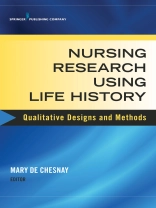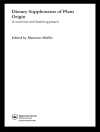‘This is an excellent book for researchers who want to conduct nursing research using life history. It contains worthwhile basic information about the design and many good examples of its use. ‘ — Doody’s Book Review Service
Life history is a qualitative research method used to tell the story of an individual through the eyes of a researcher, who frames the story within the context of the culture in which the person lived. In this book, experienced scholars in qualitative life history research discuss the theoretical rationale for using this design, describe its components, and delineate a practical plan to conduct studies, including a focus on appropriate methods, ethical considerations, and potential pitfalls. Examples from published nursing research with author commentary help to support new researchers in making decisions and facing challenges.
This concise, ‘how to’ guide to conducting ethnography research is part of the seven-book nursing series, Qualitative Designs and Methods, which focuses on qualitative methodologies. The series will be of direct aid to novice nurse researchers and specialists seeking to develop or enhance their competency in a particular design, graduate educators and students in qualitative research courses, research sections in larger hospitals, and in-service educators and students.
The book describes traditional and focused life history, phases of research, and methodology from sample and setting to dissemination and follow-up. Case studies follow a template that includes a description of the study, data collection and analysis, and dissemination. The book also discusses techniques whereby researchers can ensure high standards of rigor. With a focus on practical problem solving throughout, the book will be of value to novice and experienced nurse researchers, graduate teachers and students, in-service educators and students, and nursing research staff at health care institutions.
Key Features:
- Includes examples of state-of-the-art life history nursing research with content analysis
- Describes types of life history, phases of research, and methodology
- Provides case studies including description, data collection and analysis, and dissemination
- Written by international scholars of qualitative life history
Table of Content
Foreword: Life History as a Research Methodology by Kathleen R. Martin
Preface
Prologue: Commonalities in Qualitative Research by Mary de Chesnay
Chapter 1: Overview of Life History
Mary de Chesnay
Chapter 2: State of Art in Nursing Research Using Life History
Mary de Chesnay
Chapter 3: Collecting Life Histories
Mary de Chesnay and Murray J. Fisher
Chapter 4: Embracing the Ugly Child Within: Life History of an Incest Survivor
Leslie West-Sands
Chapter 5: Whistle-Blowing as Self-Reported Disclosure by Incest Survivors
Edwina Skiba-King
Chapter 6: The Stories of Us: Using Life Histories to Inform Practice
Adelita Cantu
Chapter 7: Theorized Life Histories: Masculinity and Male Suicide
Jo River and Murray J. Fisher
Chapter 8: Using Life History to explore the Experience of Women Living with a Rare Chronic Illness: Lymphangioleiomyomatosis (LAM)
Denise Haylen and Murray J Fisher
Chapter 9: Introduction to Life Histories as Doctoral Class Assignment
Mary de Chesnay
Chapter 10: Losing a Child from Brainstem Tumor: Life History of Nora
Brenda Brown
Chapter 11: Successfully Overcoming Breast Cancer: Nicoleís Story
Katrina Embrey
Chapter 12: Overcoming Substance Abuse: A Life History of Alexa
Nancy Capponi
Appendix A: List of Journals That Publish Qualitative Research
Appendix B: Essential Elements for a Qualitative Proposal
Tommie Nelms
Appendix C: Writing Qualitative Research Proposals
Joan. L. Bottorff
Appendix D: Outline for a Research Proposal
Mary de Chesnay
About the author
Mary de Chesnay, Ph D, RN, PMHCNS-BC, FAAN, is professor at Kennesaw State University, School of Nursing, Kennesaw, Georgia.












